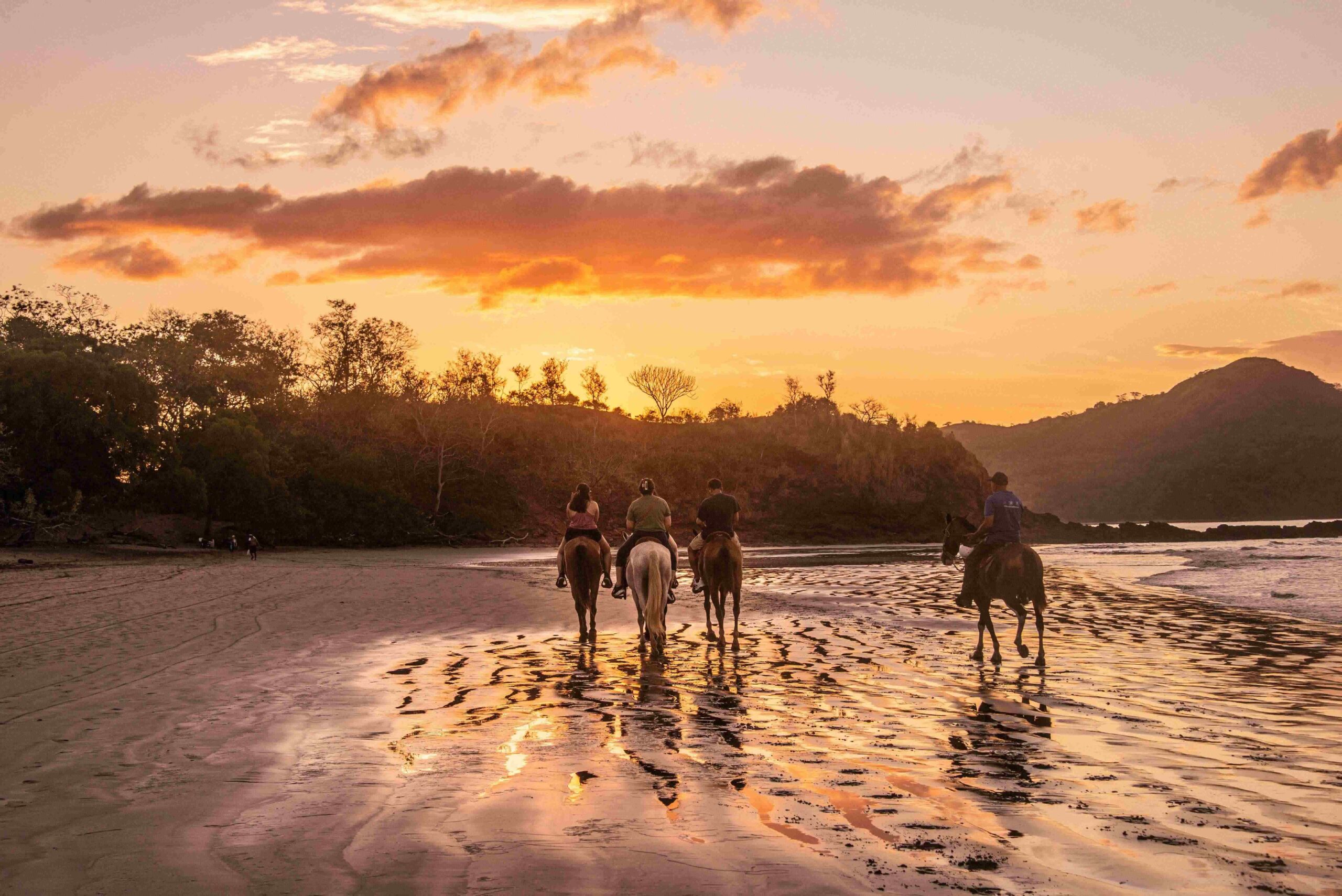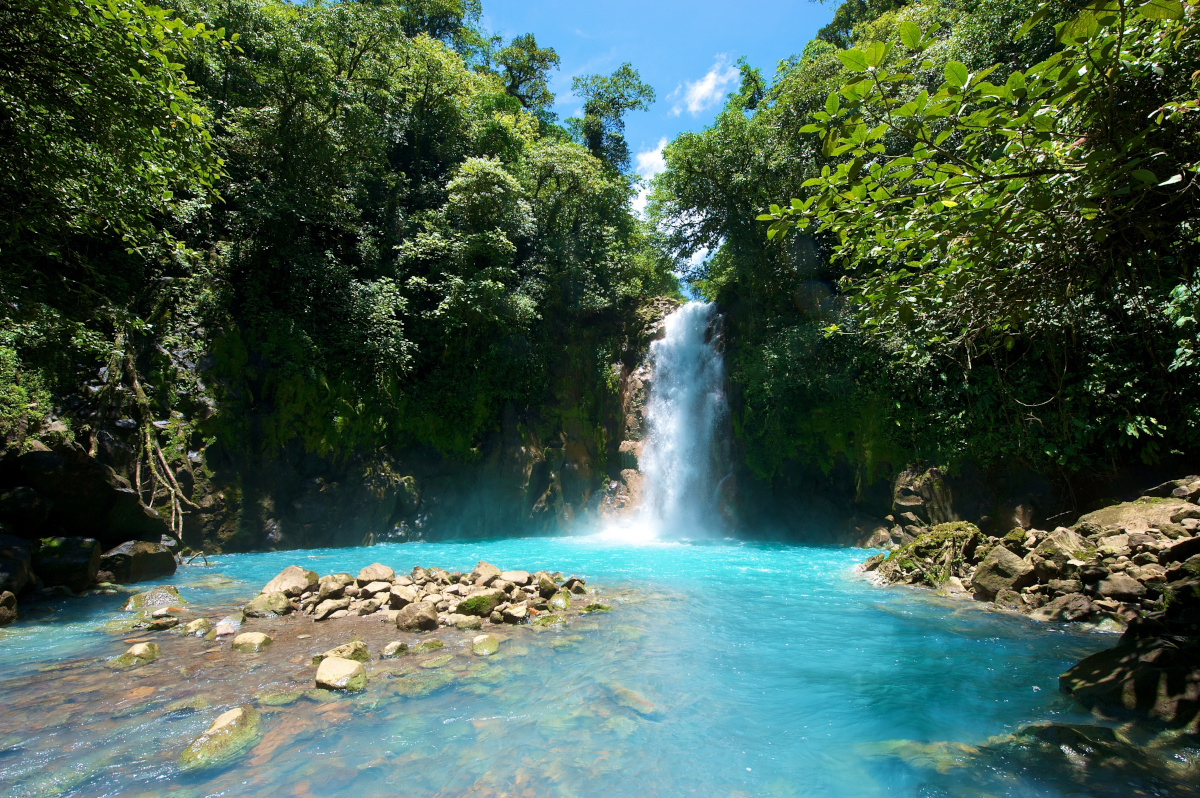
Costa Rica Travel Insurance: What You Need to Know Before You Go
Experience Costa Rica's Pura Vida, with the best trip insurance from Redpoint
Adventure travelers love exploring the natural beauty of Arenal Volcano National Park, the lush rainforests of nearby La Fortuna, and the incredible biodiversity of Corcovado National Park, as well as the easily accessible pristine beaches and crystal-clear waters of Tamarindo, Playa Langosta, and Playa Grande. And yet, amidst all that action, Costa Rica also manages to be laid-back and relaxed, thanks to a unique Pura Vida ("pure life") approach to day-to-day life.
But just because Costa Rica is a welcoming destination doesn't mean that everything will go exactly as planned during your trip. From travel disruptions due to tropical weather to medical emergencies during outdoor activities, you’ll want to be prepared for anything that could impact your trip — and for that, a comprehensive travel insurance policy is a must.
Read on for more Costa Rica travel tips, from the health and safety concerns you should know about to the travel insurance plans that will best meet your needs.

Health & Safety in Costa Rica
Costa Rica is proud to be one of the safest destinations in Central America. Its tourist areas are typically safe and free from violent crime, but travelers should still take common-sense precautions. Be aware of petty crime, such as pickpocketing and bag-snatching, and don’t spend time in dark, unpopulated areas late at night.
As it does for all international travel, the Centers for Disease Control and Prevention (CDC) recommends being up-to-date on routine inoculations, like measles, hepatitis A and B, and typhoid. There are no mandatory vaccinations required for U.S. travelers, although you may need a yellow fever vaccine if you plan to enter Costa Rica from certain areas in South America or Africa.
Dengue fever and chikungunya are present in Costa Rica and transmitted by mosquitoes, so wearing insect repellent and using protective clothing is advised.
For travel resources and the most up-to-date information on health and safety in Costa Rica, consult the U.S. Department of State’s country information page and the CDC’s country-specific guidance before your trip.
Costa Rica is known across the world for its biodiversity, including snakes, insects, and large mammals. While encounters are rare, you never want to feed or approach the wildlife, as it can be dangerous and disrupt ecosystems.
It may be a tropical paradise, but even at the most beautiful beaches you could wind up in a strong current, so always swim in designated areas with lifeguards. Be cautious when hiking, too — stick to marked trails, wear proper footwear, listen to local guides, and follow any posted advisories about risks.
When traveling to Costa Rica, your plans may be impacted by extreme weather and the potential for natural disasters. Landslides and flash floods can occur during the rainy season (May to November), so exercise caution when traveling then in mountainous areas.
Earthquakes, volcanic activity, and occasional hurricanes can happen as well. Familiarize yourself with emergency procedures at your accommodation, and follow any local advisories if you experience a disaster or extreme weather event during your stay.
Driving in Costa Rica offers something of a challenge, thanks to winding roads, sudden weather changes, and unpredictable local driving habits. If you’re considering a rental car to explore rural areas, opt for a 4×4 and plan your routes ahead of time.
Public transportation is affordable, but may not always follow strict schedules. Taxis should be official (red with a yellow triangle) or arranged through a reputable service.
Insurance Benefits & Coverage for a Trip to Costa Rica
The components of a travel insurance policy offering comprehensive coverage are all the same. Before you commit to a plan, make sure it includes each benefit listed below — that way you should be covered, no matter what comes your way in Costa Rica.
Trip cancellation and trip interruption insurance:
Trip cancellation insurance can reimburse your nonrefundable expenses if your trip is canceled or cut short due to covered reasons, like illness, severe weather, or family emergencies — and Costa Rica has a tropical climate, so extreme weather could definitely disrupt your trip. For extra trip protection, cancel for any reason (CFAR) insurance is usually available as an add-on.
Travel medical insurance:
This helps cover unexpected medical expenses for injuries or illnesses incurred during your trip. Though care in private facilities is excellent, it can be costly if you have to pay out of pocket — and remember, your health insurance coverage from home will not be accepted for medical treatment in Costa Rica. If you have pre-existing medical conditions, consider tacking on a waiver when you purchase travel insurance.
Emergency medical evacuation insurance:
Emergency evacuation coverage should provide transportation to the nearest medical facility or back to the U.S. in extreme or emergency situations. If you’re planning any extreme or adventure activities in Costa Rica, such as zip-lining, rafting, or hiking in the rainforest, you may be in areas with limited medical facilities, so medical evacuation coverage will likely be essential if you urgently need high-quality medical care.
Baggage and personal belongings insurance:
This helps cover loss, theft, or damage to your belongings should they go missing during your trip.
Trip delay insurance:
Travel delay benefits should compensate you for additional expenses incurred if your trip is delayed before it starts, or during any connections or transfers. In a destination where public transit doesn’t always stick to a reliable timetable, this can be handy to have.
Redpoint’s travel insurance plans offer crucial coverage for every type of trip to Costa Rica, no matter your activity level or travel needs.
For adventurers looking to chase waterfalls or explore the incredible rainforest in Costa Rica’s Corcovado National Park, Ripcord is an extensive travel plan with high coverage limits and enhanced coverage.
If you don’t plan on getting too adventurous or too far off the beaten track, Redpoint’s other policies provide comprehensive and tailored trip protection for a wide range of situations as well. Cavalry is particularly suited for urban travel and luxury experiences, while Harbor offers robust coverage for the budget-minded leisure traveler or backpacker exploring Central America.
You can buy travel insurance for a single trip to Costa Rica, or purchase an annual policy for multiple trips. Check out our plan options and get a quote today.
FAQs for Costa Rica Travel Insurance

1. Is travel insurance mandatory for Costa Rica?
2. How much is travel insurance for Costa Rica?
3. What should your travel insurance cover for a trip to Costa Rica?
If you're doing any adventure activities while in Costa Rica, such as zip-lining, rafting, or trekking in the rainforest, make sure none of them are excluded from your coverage.
4. Are there any COVID-19 restrictions for travelers to Costa Rica?
5. What happens if a tourist gets sick in Costa Rica?
Private hospitals offer high-quality care comparable to U.S. standards, with many English-speaking doctors, especially in cities like San José. Just keep in mind that treatment can be expensive when billed out of pocket. Public hospitals provide affordable care but may have longer wait times and less English-speaking staff. (Costa Rica's official language is Spanish.)
If you need to call emergency services in Costa Rica, dial 911. If you're struggling to find adequate care, Redpoint can be reached for round-the-clock assistance at +1-415-481-0610.
6. Are the hospitals good in Costa Rica?
7. What documentation is needed to visit Costa Rica?
8. Is Costa Rica safe to visit?
Petty crime, such as pickpocketing, can be a concern throughout the country, and though violent crime is rare, offenses including armed robbery, homicide, and sexual assault may affect travelers. Take the usual precautions, such as avoiding being alone at night on deserted streets and beaches and not flashing your valuables in any circumstances.
8. Is Costa Rica safe to visit?
10. How do I contact the U.S. Embassy in Costa Rica ?
Calle 98 Vía 104, Pavas
San José
Tel: (506) 2519-2000
Protect your trip with Redpoint travel insurance
Redpoint is known for comprehensive and easy-to-understand policies that suit any type of trip, from laid-back island hopping to more strenuous activities, like waterfall chasing and volcano exploring. Take a closer look at our travel insurance plans — Ripcord, Cavalry, and Harbor — and get a quote for your next trip today.

